List of Viral Diseases in HumansVirusViruses are tiny particles that are made up of DNA or RNA (genetic materials) covered by a protein layer, and some of them also possess a fatty 'envelope' covering. Viruses are dependent on the hosts (organisms whom they attack or infect) for their living as they are not capable of reproducing on their own. Generally, viruses got a bad reputation because of it's deadly infections, but they also play certain crucial roles for humans, plants, animals, and the environment. For instance, some viruses prevent the hosts from catching other infections. Viruses also take part in the evolution process by transmitting genes between various species. Scientists use them to add new genes into cells during biomedical research. 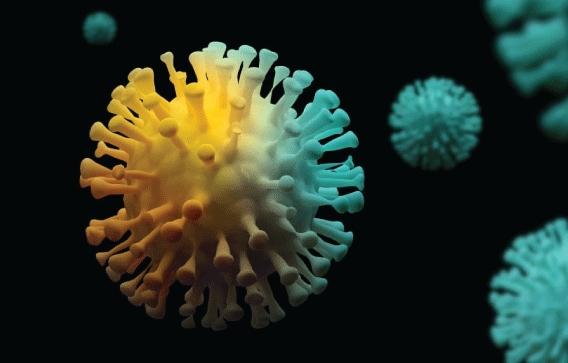
Some microbiologist doesn't agree that viruses are alive, whereas some say they are alive by offering these reasons:
Here are reasons why some microbiologists deny that viruses are alive:
What is Viral Infection?A viral infection is a multiplication of deleterious viruses within a person's body. Viruses are unable to reproduce in the absence of the host. It affects the host by inserting their genetic materials into the cells and taking over the cell's interior mechanism to produce enough particles of the virus. The virus produces more duplicates and bursts the host cell during active viral contamination. This helps to set the recently produced virus particles free. At other times, the host cell is "bud" off by the virus particles before getting destroyed by the same. In one way or another, new virus particles subsequently transmit the infection to other cells freely. As the consequences of cell and tissue destruction and the related response from the immune system, several viral diseases develop in the body. The transmission of viral infections may take place in many ways, such as it can be spread through touch, saliva, or the air. Some viruses also get transmitted via sexual contact and by using infected needles. Ticks and mosquitoes are some of the insects that behave as vectors for spreading viral infection. Vectors transmit the virus from one host to another. Contaminated food and water are most likely to spread viral diseases. 1. Respiratory viral diseases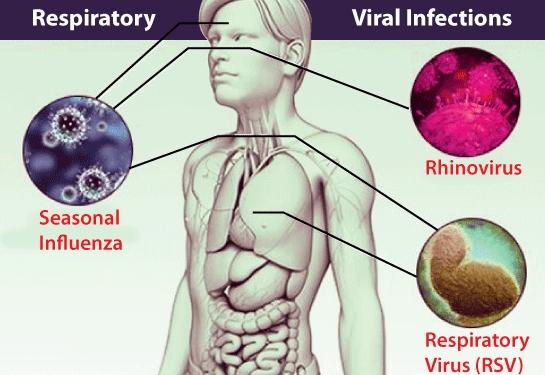
Respiratory viral diseases are infectious. It generally infects the upper and lower parts of a person's respiratory tract. Examples of respiratory diseases are:
Clinical Manifestation:
Transmission: Respiratory viruses are transmitted via droplet infection (coughing or sneezing). A person may catch the infection if any person with viral infection sneezes or coughs near them, and unknowingly they inhale these droplets. Contaminated Objects, like tabletops, doorknobs, and one's own daily use items, can also transmit viruses if we use them and then touch our eyes or nose. Treatment These types of viral diseases cure on their own. But OTC (over-the-counter) drugs such as decongestants, antitussives, and analgesics help to lessen the symptoms. Additionally, Tamiflu is an antiviral medicine that is recommended for a person suffering from the flu. Precautions:
2. Hemorrhagic viral diseases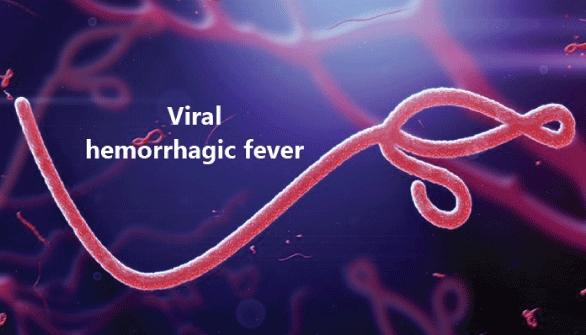
Hemorrhagic viral diseases are serious conditions where a person's circulatory system is damaged. Examples of hemorrhagic viral diseases are:
Clinical Manifestation:
Transmission: Diseases like dengue and yellow fever are transmitted from a bite of infected insects, whereas diseases like Ebola are spread to a person when he comes in contact with the blood and body fluid of an infected person. Dried feces and urine of a rodent containing viruses cause Lassa fever when inhaled or consumed by someone unknowingly. Treatment: However, there is no exact regimen and cure for hemorrhagic viral diseases. Keeping the body hydrated is very important for a person suffering from these infections, and sometimes IV (intravenous) fluids are recommended to a patient for maintaining fluid-electrolyte balance. In some cases, ribavarin, an antiviral drug, is prescribed. Precautions: People living or working in an area where these diseases are common can adopt the following preventions to decrease the risk:
Researchers are continuously working to develop vaccines for various hemorrhagic viruses. Recently, the vaccine for yellow fever has been provided to people moving or visiting areas where this disease is common. 3. Gastrointestinal viral diseases: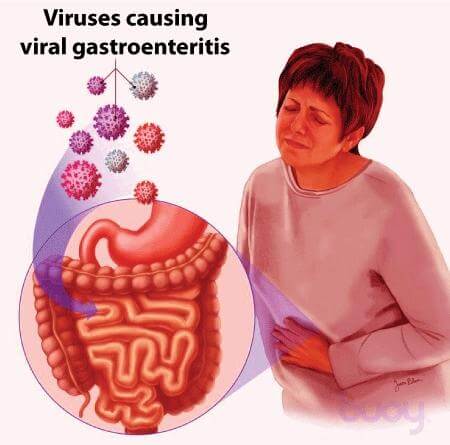
These diseases affect your digestive tract, and the viruses responsible for the infection are contagious and commonly lead to a condition known as gastroenteritis (stomach flu). Examples of gastrointestinal viral diseases are:
Clinical Manifestation:
Transmission During the bowel movement, gastrointestinal viruses are shed in the fecal matter. Food or water polluted by stool can transmit the viruses to other people. If a person shares utensils or personal items with anyone with a viral infection can also get caught by the virus. Treatment There is no treatment for gastrointestinal viral infection as, in various cases, they heal on their own in 2 -3 days only. A person should drink plenty of fluids to restore the loss that occurred due to vomiting and Diarrhea. Prevention
4. Hepatic viral diseases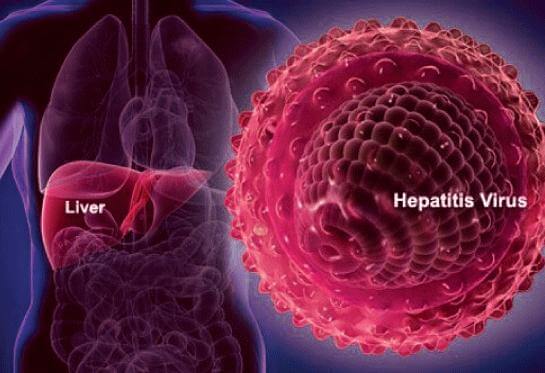
Inflammation of the liver, basically known as viral hepatitis, is a serious medical condition caused by hepatic viral diseases. Hepatitis A, B, and C are some of the most common types of viral hepatitis. It is worth bearing in mind that infection caused by viruses like the yellow fever virus and cytomegalovirus may create certain complications to the liver. Examples of hepatic viral diseases are:
Clinical Manifestation
Transmission Hepatitis B and C can be spread from one individual to another through body fluids, for instance, transfusion of blood. Also, sharing personal items such as razors and needles that came into contact with blood transfers the virus. Hepatitis B also spreads by maintaining sexual contact with an infected person, and if someone already has hepatitis B can develop hepatitis D in the future. Consumption of food and water polluted by feces from someone having a virus can cause hepatitis A and E. Treatment
Prevention Vaccines are available for both hepatitis A and hepatitis B. Some other precautions to prevent viral hepatitis are:
5. Neurologic viral diseases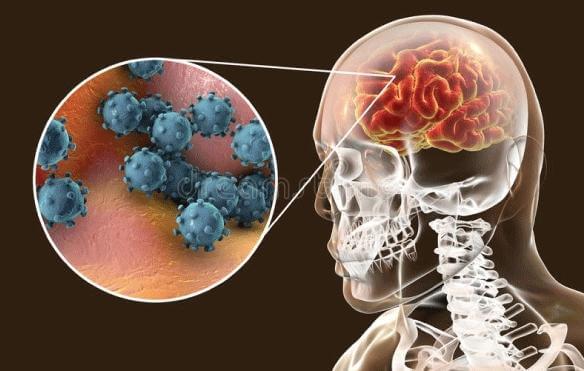
Some viruses infect the brain and tissues surrounding it, which leads to neurologic viral diseases. Examples of neurologic viral diseases are:
Clinical Manifestation
Transmission Various neurological viruses transmit after getting bitten by an infected animal or bugs, like ticks and mosquitoes. While viruses like poliovirus and enterovirus are communicable and transmitted when an individual comes in close contact with a person with a virus. These viruses can also get spread through contaminated items. Treatment
Prevention
6. Cutaneous viral diseases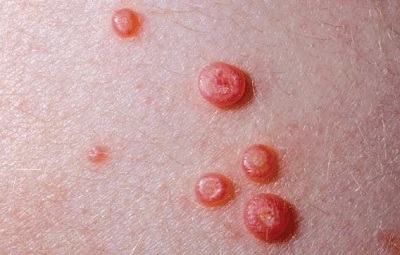
Lesions and papules form on the skin because of cutaneous viral diseases. In the majority of cases, lesions remain on the skin for a long period of time or reappear again after disappearing for a short time. Examples of cutaneous viral diseases are:
Transmission These viruses are transferable and generally spread through close contact with a person having a virus. Touching or using objects such as towels or faucet handles that are contaminated by the virus can cause the infection. Treatment
Prevention
7. Exanthematous viral disease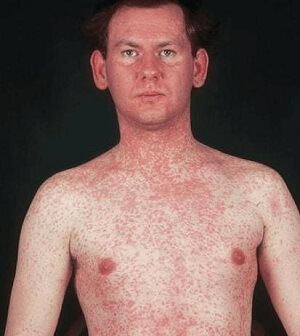
Exanthematous viral diseases give rise to skin rashes, and most of them lead to other added symptoms too. The majority of the viruses in this classification are extremely communicable. Examples of exanthematous viral diseases are:
Clinical Manifestation
Transmission
Treatment Treatment of these diseases targets managing the clinical manifestation. Medications like acetaminophen help to reduce fever and some other distressing symptoms. The person having chickenpox or shingles infections is recommended to take antiviral medications like acyclovir. Prevention Vaccines for measles, chickenpox, smallpox, and shingles are available. The risk of developing chikungunya virus infection can be prevented by protecting against mosquito bites. ConclusionThere are several viral diseases, such as stomach flu or the common cold, that are minor and go away on their own in a few days only. However, some are very serious. Basically, viral diseases don't respond to antibiotics, and their treatment generally focuses on the management of their clinical manifestation. One can support their immune system by taking proper rest and sleep, maintaining good hygiene, taking a balanced diet, and keeping the body hydrated.
Next TopicList of all kitchen utensils
|
 For Videos Join Our Youtube Channel: Join Now
For Videos Join Our Youtube Channel: Join Now
Feedback
- Send your Feedback to [email protected]
Help Others, Please Share










